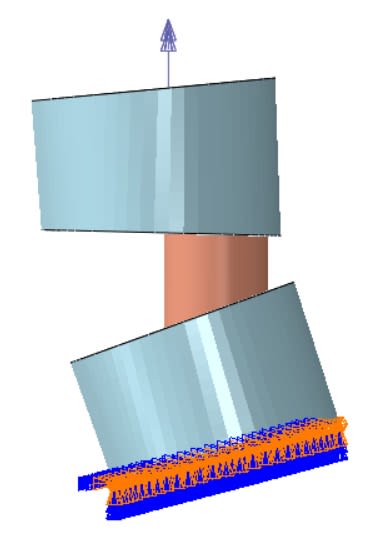Hi!
I am trying to model a simple cylinder between two NON-parallel plates. The cylinder is subjected to both compression and lateral bending (or other pure moments). The surfaces of the cylinder and the plates are already in contact (the cylinder does not present parallel end-surfaces) and I impose a simple surface-to-surface "Hard" contact with friction. The problem is really simple, but it failed immediately. It is not even able to perform a single increment. The geometry should not present any initial compenetration between the surfaces in contact. I tried to modify some parameters of the contact formulation (passing to the node-to-surface or General contact) but nothing change. I don't know what to do.
Can someone help me?
Thank you very much,
Davide
I am trying to model a simple cylinder between two NON-parallel plates. The cylinder is subjected to both compression and lateral bending (or other pure moments). The surfaces of the cylinder and the plates are already in contact (the cylinder does not present parallel end-surfaces) and I impose a simple surface-to-surface "Hard" contact with friction. The problem is really simple, but it failed immediately. It is not even able to perform a single increment. The geometry should not present any initial compenetration between the surfaces in contact. I tried to modify some parameters of the contact formulation (passing to the node-to-surface or General contact) but nothing change. I don't know what to do.
Can someone help me?
Thank you very much,
Davide

